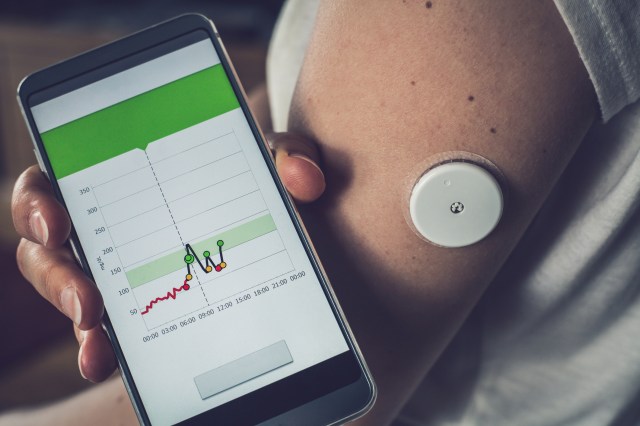
Blood sugar management and Atkins’ low carb lifestyle go hand in hand.
Daily blood sugar management is important for everyone and not just something people with prediabetes or type-2 diabetes should focus on. Daily blood sugar management may have powerful benefits if you want to increase your energy, improve your mood and manage your weight.
Why You Should Manage Your Blood Sugar Levels
Most carbohydrates are broken down into glucose by the body, raising blood sugar levels, while insulin helps regulate glucose absorption into cells for energy or storage. When this is out of whack, it may be linked to inflammation, aging, weight gain and hormonal imbalances. As these factors continue, your risk for illness and disease, such as metabolic syndrome, heart disease and diabetes, may increase.
Small Changes = Big Results When You Manage Your Blood Sugar Levels Naturally
Your dietary habits and lifestyle changes are the key to managing your blood sugar levels naturally as part of a low carb lifestyle. Consider nutrition preventative as medicine instead of waiting until it’s too late and you’re fighting an uphill battle. Simple tweaks can have a powerful effect:
1) Choose quality carbs.
Swap white rice for whole grains like brown rice, quinoa, farro or beans for better blood sugar management and sustained energy levels.
2) Veggies first, then carbs
Instead of making grains the focal point of a side dish, let them be a side to your side dish. Pair your fiber-rich veggies with carbs to mitigate any blood sugar spikes you might experience. For example, sprinkle cooked farro on a salad texture and fiber or toss steamed broccoli with olive oil, Parmesan cheese and quinoa.
3) Pair carbs with healthy fats.
This can slow the process of glucose entering your bloodstream. Try ¼ of a whole-wheat bagel slathered with nut butter. Enjoy toasted whole-grain or low carb bread spread with avocado, drizzle with olive oil, and sprinkle with sea salt and crushed red pepper.
4) Embrace the power of protein.
Adding protein to your meals and snacks can help you maintain steady energy levels and manage blood sugar spikes. Digesting and metabolizing protein also helps burn twice the calories as carbs. Even better? One study even shows that boosting protein intake to 25% of your daily calories may reduce cravings by 60%.
5) Fill up with fiber.
It naturally helps you feel fuller for longer, which may help reduce your food cravings. Your body does not break down fiber, so it slows the entrance of glucose into your bloodstream, reducing the blood sugar spikes that may encourage your body to produce and store fat. Inulin is a soluble fiber that may also help manage blood sugar levels and is naturally found in garlic, asparagus, Jerusalem artichokes, leeks, jicama, onions and wild yams.
5 Ways to Add More Fiber in Your Low Carb Lifestyle
6) Practice portion control.
Keeping an eye on your portion sizes may help avoid blood sugar spikes. A straightforward solution is to use smaller plates for your meals because an analysis of research shows that people tend to consume less when served food on smaller plates. If you’re eating out, choose a half order from the menu or share an entrée.
7) Make your meals small and frequent.
If you follow the standard breakfast-lunch-dinner schedule, break this up by eating a small mini-meal every two to three hours. Or decrease the size of your main meals and add a snack with fiber-rich veggies or low-glycemic fruit, protein and healthy fats. This will help keep your metabolism steadily burning calories from each meal while preventing sudden blood sugar drops and cravings.
8) Break a sweat.
Daily exercise can help manage blood sugar levels by reducing insulin resistance and improving insulin sensitivity. Try to get some movement in after every meal.
9) Manage your stress.
Stress raises cortisol levels, a hormone that may contribute to weight gain and fluctuating blood sugar levels.
10) Stay hydrated.
According to the Centers for Disease Control (CDC), dehydration may cause blood sugar spikes. Invest in a refillable water bottle, sip from it frequently, and refill it as soon as it’s empty.
11) Get some sleep.
How much should you get? Seven to 9 hours a night of sleep is typically recommended. The Sleep Foundation says, “Decreased sleep is a risk factor for increased blood sugar levels. Even partial sleep deprivation over one night increased insulin resistance, which can, in turn, increase blood sugar levels.”
12) Start a journal.
A food journal is a highly effective way to help you record your meals and food intake and how you react after certain foods or meals, including your energy levels and mood, which may help you understand how your blood sugar levels are affected. You can also record your sleep habits, weight, workouts, goals or anything else to help you stay in tune with your physical and mental wellness.
